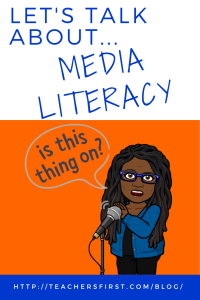As an educator, it’s essential to grasp the significant role CNN plays in the ‘CNN Effect,’ a term coined to describe the profound impact of CNN on the news industry. Since its inception in June of 1980, CNN has transformed news delivery, shifting from periodic updates to 24-hour coverage. This shift has made real-time information readily available and significantly influenced public opinion, consumer behavior, and even foreign policy. However, this constant stream of information presents the challenge of distinguishing fact from opinion, a particularly crucial skill during an election year. Therefore, it’s more important than ever to enhance media literacy education to equip our students to navigate this complex media landscape effectively.
Why Media Literacy Matters Now More Than Ever
Have you ever pondered over how the news shapes your worldview? In an era where information is as accessible as the air we breathe, it’s crucial to pause and question the quality of that information. While 24-hour news networks, such as CNN, can keep the public well-informed, they also pose the risk of disseminating misinformation or instigating undue panic. This approach to news broadcasting has undoubtedly set a precedent. However, it also raises questions about the responsibility of news outlets and the critical role of media literacy in helping individuals navigate this information landscape.
So, how can we empower our students to become media-literate citizens? Here are some ideas for engaging activities that educate and inspire critical thinking and creativity, which you can adapt across grade levels!
Elementary School: Building Foundations with the Iron Chef Eduprotocol
Imagine a classroom abuzz with excitement as students gather in groups, each eager to present their version of a news story. This is the Iron Chef Eduprotocol in action, a dynamic activity where young minds learn that the same story can have multiple narratives. We start with simple news stories and challenge each student group to become a different ‘news outlet’ – a blog, TV station, newspaper, radio station – you name it! Within each group, they’ll assume roles like a community desk reporter or a world news anchor, mirroring a real newsroom. Each group is assigned a specific lens through which to view their stories, such as being overly optimistic, pessimistic, or neutral. This twist serves as the ‘secret ingredient’ that enables students to see how the same event can look different when presented from various perspectives, thereby fostering an understanding of bias in the media.
Middle School: Critical Thinking with Sensory Media Analysis
As students progress to middle school, their capacity for critical analysis deepens. Using the Iron Chef Activity as an introduction, we can help students build additional skills by adding a Sensory Media Analysis to this activity set. Ask students to compare how different media sources report the same story. They engage with the content through various senses, developing a nuanced understanding of bias and the art of storytelling. Using this type of analysis taps into the “Gathering Data Through All Senses” Habit of Mind, encouraging students to be information detectives. Think about it – a news report with dramatic music versus one with calm narration creates entirely different moods, right?
High School: Synthesizing Knowledge with Media Creation
High school students are on the cusp of adulthood, and with that comes the expectation that they analyze media and create it responsibly. Start with the Iron Chef Eduprotocol activity, move on to sensory analysis, and culminate with media creation. After researching a current event from various sources, ask students to create short videos presenting the story from neutral and biased perspectives. This immersive experience allows them to appreciate the nuances of media production and the responsibility of crafting narratives. Students can use a platform like Canva for Education (reviewed here) to storyboard, script write, film, and share their news videos.
These activities are just a springboard! The goal is to equip students with the tools to think critically about the information they encounter. By scaffolding media literacy activities across grade levels, educators play a crucial role in giving students the tools to become informed, critical consumers and creators of media. These skills are vital in this election year as we navigate political news and campaign messages.
CNN’s legacy reminds us of the power of media and the necessity of media literacy education. Let’s commit to fostering a culture of critical engagement and thoughtful analysis among our students. After all, education is about preparing them for the real world. And what could be more “real world” than the news that shapes their perceptions daily? This is why media literacy education is not just important but essential.


